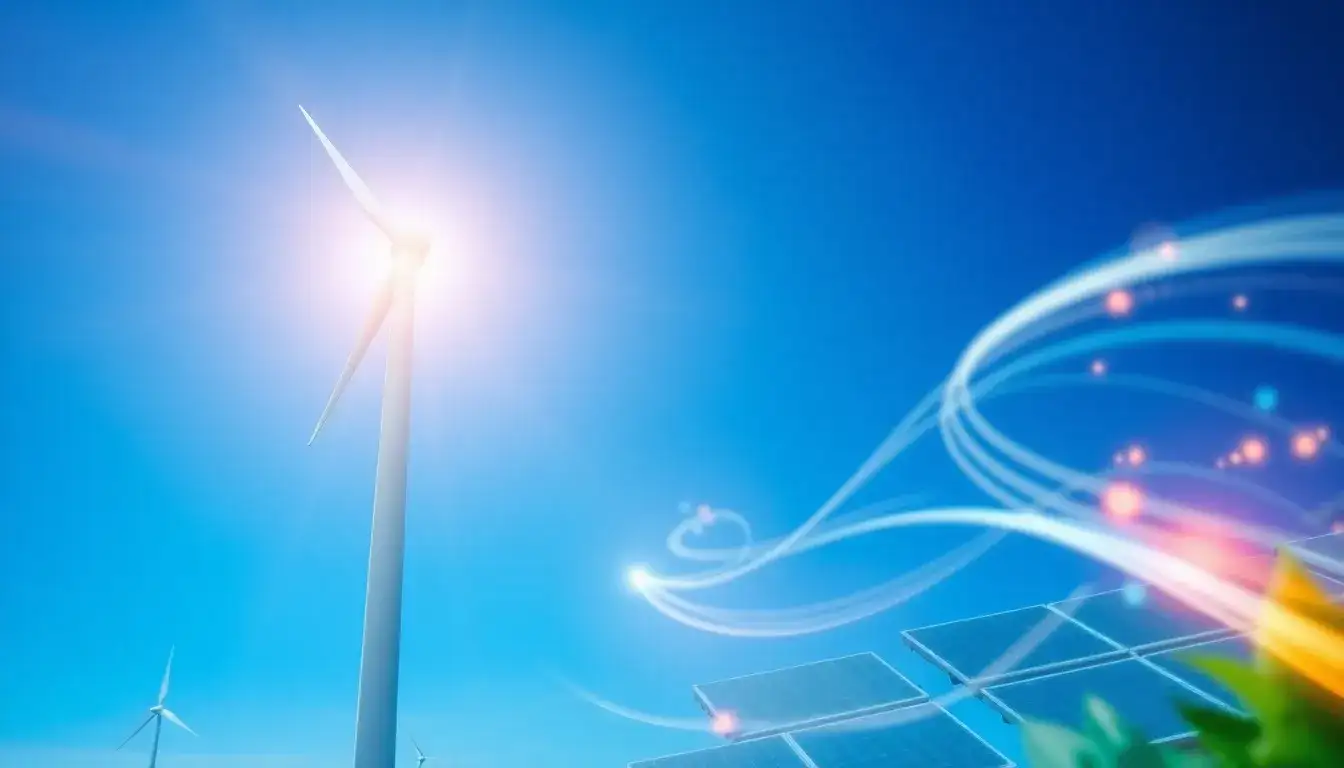
Gienfeng Technology’s Cao Zhigang: Reconstructing “Energy Value” to Drive Industry Innovation with “New Value”
On March 22, the “2025 China Wind Power Equipment Key Enterprises Leaders Summit” was held in Hangzhou, co-hosted by the Wind Energy Equipment Branch of the China Agricultural Machinery Industry Association and the Wind Energy Professional Committee of the China Renewable Energy Society. The summit, themed “Collaborative Breakthroughs and Ecological Co-construction,” explored the path to high-quality development in the wind power industry under new circumstances. Cao Zhigang, President of Gienfeng Technology, was invited to share his core thoughts on the value of new energy.
Cao noted that by the end of 2024, China’s cumulative installed capacity of new energy is expected to reach approximately 1.45 billion kilowatts, accounting for about 43% of the total, surpassing thermal power for the first time. The shift of new energy from “supplementary energy” to “main energy” is an inevitable trend. However, it is essential to recognize that achieving the goal of “over 1.2 billion kilowatts of wind and solar capacity by 2030” will require pushing for industry evolution with higher standards and demands.
For instance, the introduction of the mandatory “low voltage ride-through” standard for wind power in 2011 has evolved into stringent requirements for voltage/frequency support and grid oscillation suppression, fundamentally reshaping the new energy ecosystem based on power quality demands. The transition from subsidies to “zero subsidy + competitive grid access” serves as a market price test for the value of new energy as a mainstay.
At the policy level, the National Development and Reform Commission and the National Energy Administration issued a notice on deepening the market-oriented reform of new energy grid prices to promote high-quality development, proposing that new energy should achieve full marketization. This will significantly accelerate the pace of the new energy market, and a more active and mature market is the true vehicle for new energy to become a dominant force.
The new energy industry must adapt to changes and even lead them, reconstructing the “value” of energy and using “new value” as the driving force for technological and commercial innovation in the industry.
Value Symbiosis: Treating Fossil Energy as Partners
Building a new power system should not fall into the trap of “new energy supremacy.” It is crucial to objectively acknowledge that, under current conditions, fossil energy remains the foundation for grid regulation, effectively alleviating the flexibility pressure caused by the high proportion of new energy integration. Fossil energy is not an “opponent” of new energy; only through collaborative exploration and innovation can we achieve a balance among the three goals of “safety, economy, and low carbon” in the new power system.
Value Reconstruction: Generating Power at the Right Moment
After the full market entry of new energy, wind power generation should no longer rely on “quantity” but prioritize meeting grid demands. Being able to generate power “when needed” and “generate more” during peak demand times represents “high value.” Enterprises need to adopt a power service provider mindset, promoting grid-supporting technologies and products, enhancing prediction accuracy, matching generation with demand, and optimizing trading strategies and flexibility.
Value Aggregation: Synergizing Multiple Power Sources
In the current grid dispatch system, wind and solar power are often seen as “mutually exclusive sources” due to their output characteristics. However, through collaborative innovation, achieving synergy between wind, solar, and storage can enhance grid reliability and create a “round-the-clock power source combination.” It is also essential to explore flexible configurations of various power sources, achieving synergy through an organic combination of centralized, distributed, and independent power sources.
Value Focus: Deepening Offshore Wind Power
The value of offshore wind power lies not only in providing more green electricity but also in serving the national marine strategy and driving the “blue economy.” For example, the increased demand for carbon fiber blades in large offshore wind turbines accelerates the iteration and cost reduction of carbon fiber technology, promoting its application across various industries. There is hope for society to provide a broader development space for offshore wind power from both policy and industry perspectives, creating more possibilities for marine value transformation.
Value Authenticity: Clarifying the Path for Green Chemistry Development
Currently, the development of green chemistry is evolving rapidly, with wind power for hydrogen and ammonia becoming a market focus. Wind power should facilitate the large-scale application of green fuels rather than reverse the order of priorities by launching numerous green chemistry projects solely for the sake of developing wind power. Furthermore, there is a noticeable homogenization of domestic wind power projects for green hydrogen and ammonia, leading to excessive investment and competition, necessitating a return to the demands and rhythm of the green fuel industry itself. The ideal state for the healthy development of the industry is a harmonious collaboration between wind power and green chemistry.
Value Transmission: Strengthening Development Confidence
Although the development path of the new energy industry has encountered twists and turns, the trend of a spiraling upward trajectory remains unchanged. Industry chain enterprises should work together under pressure to seek breakthroughs, and it is hoped that financial institutions will provide financial model support to promote project financing. The connection mechanism between green certificates and carbon emission rights trading markets is expected to maximize the value of green electricity, highlighting the immense value of the new energy market.
China’s new energy industry is undergoing a qualitative transformation from “policy-driven” to “market-driven,” and from “following changes” to “leading transformations.” In the face of the ever-evolving industry ecosystem, we should timely reassess the value positioning of the industry and aim for a development path that targets more valuable directions.







